|
|||||||||||||||||||||||||||||||||||||
|
|||||||||||||||||||||||||||||||||||||
|
|
|||||||||||||||||||||||||||||||||||||
|
|||||||||||||||||||||||||||||||||||||
|
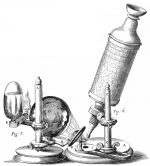
We are in 1679, in England. The protagonist of the story is Robert Hooke, a polymath who contributed to architecture and experimental science and made several contributions to the understanding of nature. For that, he used the incipient telescopes and optical microscopes that were under development in that century. While using his microscope, Hooke observed that when he dripped water onto the surface of the samples and placed this liquid layer in contact with the instrument, the water adhered to the lens and the images gained clarity and resolution.
Liquid layers adhered to a surface are called meniscus, and their use at the interface between an optical microscope and a sample became, after Hooke, the basis of the so-called “liquid immersion microscopy.”
We are now in Brazil, at the Center of Microscopy of the Federal University of Minas Gerais (UFMG), more than 300 years after Hooke’s discovery – enough time for humans to develop numerous equipment and characterization techniques, such as microwave impedance microscopy (sMIM).
This technique is one of the newest members of the scanning probe microscopy family. In these microscopes, an extremely fine tip moves over the sample surface. The forces resulting from the probe-sample interaction are measured, which allows reconstructing the image of the sample surface, providing information about some of its properties. In the case of the sMIM technique, a microwave emitter is coupled to an atomic force microscope (AFM). The probe tip of the AFM then functions as a waveguide, and the interaction between the microwaves and the sample provides the information.
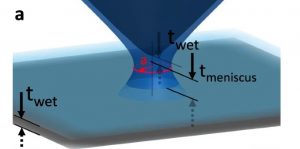
The hypothesis was validated through mathematical simulations, carried out within the doctorate in Electrical Engineering of Diego Camilo Tami López, defended in 2020 at UFMG. The modeling of the system, including the formation of meniscus, showed that the thin water slide did concentrate the microwaves, a phenomenon that generated an increase in the resolution of images generated by sMIM.
In addition, experimental tests were carried out using samples of twisted bilayer graphene, prepared using a technique recently developed by the UFMG researchers, and published earlier this year. Made up of two layers of graphene stacked and slightly misaligned with each other, the material was chosen by the UFMG team because it offers great versatility in the experiments.
The samples were prepared by scientists from UFMG with the collaboration of researchers from the Federal University of Bahia and NIMS (Japan). The sMIM experiments were carried out by Doug Ohlberg, a scientist who joined the UFMG research group in 2017, after more than 20 years working in the corporate laboratories of Hewlett-Packard in Palo Alto (USA).
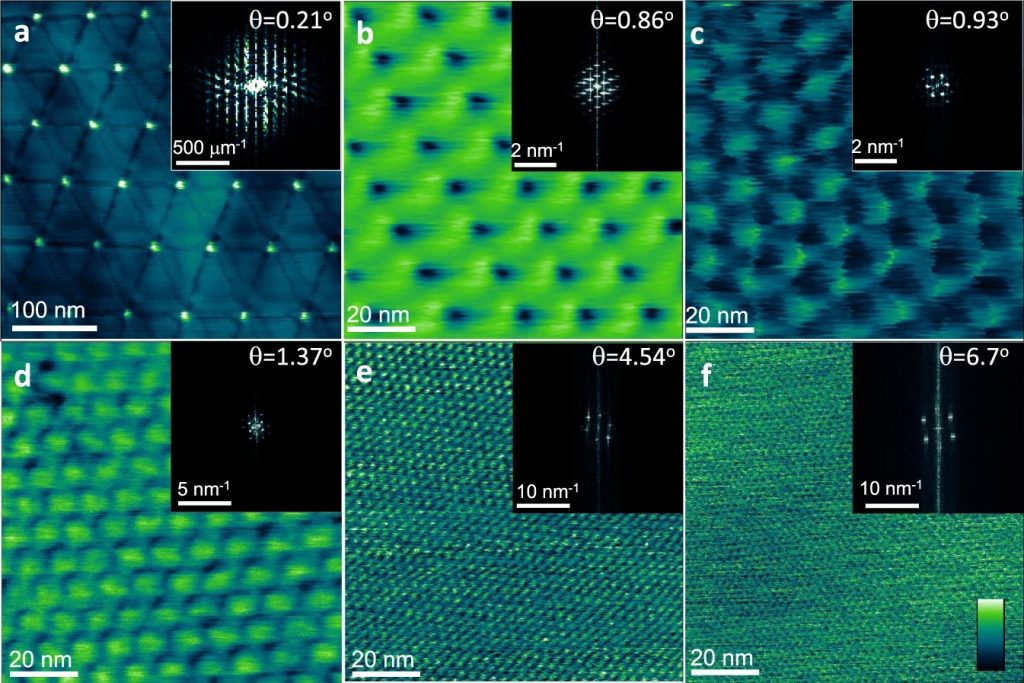
In these experiments, by controlling the formation of water meniscus of very few nanometers at the tip of the microscope, the researchers were able to concentrate the microwaves in a controlled manner and go beyond the limits of the sMIM technique, achieving super-resolution.
“We showed that using microwaves as a tool in microscopy can be expanded to a scale of 1 nanometer,” says Professor Gilberto Medeiros Ribeiro (UFMG), corresponding author of the article that reports this research in the journal Nature Communications, in open access format. For non-microscopy specialists: this resolution means that two distinct points can be distinguished at a distance of at least 1 nanometer. “This is important because microwaves represent very low energy radiation, which allows applications in biology,” adds the scientist.
As microwaves have a wavelength between 1 meter and 1 millimeter, this advance indicates the possibility of probing materials at the nanometer scale with much larger waves. “The main contribution of the work is to show how the diffraction limit was surpassed by 100,000,000 times: we were able to make images with 1 nanometer of resolution using a wavelength of 10 centimeters,” says Medeiros Ribeiro.
The research was carried out with funding from the Brazilian agencies CNPq, Finep, FAPEMIG and Capes.

Paper: The limits of near field immersion microwave microscopy evaluated by imaging bilayer graphene moiré patterns. Douglas A. A. Ohlberg, Diego Tami, Andreij C. Gadelha, Eliel G. S. Neto, Fabiano C. Santana, Daniel Miranda, Wellington Avelino, Kenji Watanabe, Takashi Taniguchi, Leonardo C. Campos, Jhonattan C. Ramirez, Cássio Gonçalves do Rego, Ado Jorio & Gilberto Medeiros-Ribeiro. Nature Communications volume 12, Article number: 2980 (2021). Open acces through https://doi.org/10.1038/s41467-021-23253-2.
Contact of the corresponding author: Prof Gilberto Medeiros Ribeiro – gilberto@dcc.ufmg.br
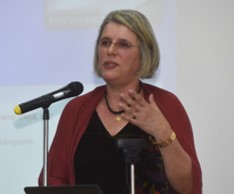
Professor Mônica A. Cotta (UNICAMP), president of B-MRS, was elected, at the beginning of July, director of the Gleb Wataghin Institute of Physics (IFGW) at UNICAMP for a four-year term. The inauguration took place in a virtual ceremony on July 30th.
The scientist has been a professor at the IFGW – UNICAMP since 1993 and was associate director for the last four years.
First woman to chair the B-MRS, Cotta also becomes the first woman to lead the IFGW.
The virtual formal inauguration session, with Professor Cotta’s speech, can be watched on https://youtu.be/FKABAH36Dt4
B-MRS Newsletter. Year 8, issue 5.
|
|||||||||||||||||||||||||||||
|
|||||||||||||||||||||||||||||
|
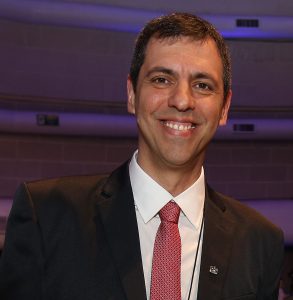
In 2010, Professor Aldo José Gorgatti Zarbin and co-authors published the first article on a simple and inexpensive technique that allows obtaining high-quality thin films at the interface between two immiscible liquids, such as water and oil. The route essentially consists of dispersing the material to be processed in one of the liquids and shaking the system. Afterwards, if the process parameters are properly controlled, nature takes care of organizing the material at the interface of the liquids, generating a solid film that can be easily deposited on other materials.
The discovery looked promising, and over the next decade, the Materials Chemistry Group at the Brazilian Federal University of Paraná (UFPR), led by Zarbin, continued to make efforts to understand and master the process, and to test it with various materials, substrates and applications. The results exceeded the expectations. The “liquid/liquid interfacial route,” as it was termed, allows not only to process practically all materials in the form of films, but also to synthesize them, process them and modify their surface in the same step, within the “magical” environment of the interface between the liquids.
In 2020, ten years after the first article, Aldo Zarbin was invited by Materials Horizons, a scientific journal of the Royal Society of Chemistry with an impact factor of 12.319, to write a review article on this technique that was developed and optimized in Brazil. The review was published earlier this year.
In this interview, the researcher Aldo Zarbin, who is a member of B-MRS, briefly explains the characteristics and possibilities of this route for obtaining thin films – materials that are increasingly in demand in diverse areas such as energy and health. In fact, the thickness and large surface area of thin films make it possible to control the properties of a system without substantially modifying it and without using large amounts of material.
Aldo Zarbin is Full Professor at the Department of Chemistry at UFPR. He has a bachelor’s (1990), master’s (1993) and doctoral degree (1997) in Chemistry from the State University of Campinas (UNICAMP). He is a fellow of the Royal Society of Chemistry and a full member of the Brazilian Academy of Sciences (ABC). He was president of the Brazilian Chemical Society from 2016 to 2018 and serves as vice-coordinator of the Brazilian National Institute of Science and Technology in Carbon Nanomaterials. Professor Aldo Zarbin is the author of over 150 scientific articles. According to Google Scholar, his works have more than 6,800 citations and his h-index is 47.
B-MRS Newsletter: Tell us a little about the history behind the development of the liquid/liquid interfacial route.
Aldo Zarbin: We had been working with interfaces between immiscible liquids since 2001, in the synthesis of silver and gold nanoparticles by the Brust method. At that time, we innovated the preparation of nanocomposites with polyaniline, performing the polymerization directly in the two-phase system. In Rodrigo V. Salvatierra’s master’s thesis (which began in 2008 under my supervision and was co-supervised by Prof. Marcela M. Oliveira, from UTFPR), the proposal was to prepare nanocomposites of carbon nanotubes and polyaniline in a two-phase system, and while developing that research we observed that under certain experimental conditions the product was formed at the interface between the two liquids, in the form of an extremely resistant film. We found that this interfacial film remained intact, so we developed a simple system to remove it and deposit over solid substrates, concluding that it was possible to perform deposition over any type of substrate, while maintaining a high optical quality. Based on this experimental evidence, we started to work in order to understand the phenomenon and explain the formation mechanism, which resulted in our first paper published on the subject, in the Chemistry of Materials of the American Chemical Society in 2010. In this work, we demonstrated the preparation of different transparent films between polyaniline and carbon nanotubes, with different proportions between the components, with strong characterization work and explanation of the formation mechanism. From this first work, we naturally started to study the possibility of extending the technique to other materials, and also for real applications. Rodrigo V. Salvatierra’s doctoral thesis (which was awarded the 2015 Capes Prize for a thesis in Chemistry) showed the first application, as a transparent electrode in an organic solar cell. The paper was published in Advanced Functional Materials (Wiley) in 2013, in collaboration with Professor Lucimara S. Roman’s group, from DFIS-UFPR. In parallel, several other works of master’s thesis and doctoral thesis were being carried out, to optimize the process, to understand the role of the interface, to expand the number of materials, to demonstrate different applications, allowing us reach the present day with a very significant understanding of the entire process, as well as application demonstrations in sensors, solar cells, supercapacitors and flexible and transparent batteries, transparent electrodes, catalysts, electrochromic materials, and other applications.
B-MRS Newsletter: How was the technique received by the scientific community over time?
Aldo Zarbin: The technique was widely accepted in the scientific community because of its several differentials. The main one regards the possibility of combining in a single system the preparation of highly sophisticated materials, as well as their processing as a thin film. Preparing already processed material is a tremendous advantage in the area for applications in different devices and systems. Thus, multicomponent materials that cannot be deposited as a film by the known routes, mainly transparent films, were able to be prepared using this technique. This feature made the works to be accepted and published in high-impact journals, and allowed us to be invited to present seminars at different congresses and institutions in Brazil and abroad, culminating with the publication of this review, by invitation, in Materials Horizons. In addition, several laboratories around the world started to use the technique, citing the works developed here at GQM-UFPR.
B-MRS Newsletter: To what extent was this route and the phenomena associated with it original when you and your collaborators developed the technique?
Aldo Zarbin: In short, the technique takes advantage of the high interfacial tension between two immiscible liquids, to stabilize solids at this interface in order to minimize this tension. This process of stabilizing solids at interfaces between immiscible liquids has been known for a long time, since the Pickering emulsions at the beginning of the 20th century and studied by the scientific community in recent years, which has greatly facilitated our work. Several groups had also been publishing results exploring materials stabilized at these interfaces, such as metal nanoparticles and semiconductors, carbon nanotubes and different polymers. Our differential, as well as our originality, was to demonstrate that it is possible to stabilize this solid in order to connect the units, giving it a homogeneous and stable film characteristic, and not simply a “cluster” in the solid interface. This is controlled by experimental parameters that we have optimized and described; secondly, we were the first to demonstrate that this film could be removed from the liquid/liquid interface to be deposited on different substrates, that is, to use this phenomenon as a thin film deposition technique; and finally, we were pioneers in the synthesis of multicomponent materials directly in the liquid/liquid system, in a one-pot and one-step process, where the multicomponent material is already synthesized and processed in film form.
B-MRS Newsletter: Please use this space to publicize the liquid/liquid interfacial route, with its advantages and limitations, in the Materials Science and Technology community, considering the people who could use it.
Aldo Zarbin: Let’s first look at the advantages of the technique, considering only film deposition, regardless of the material (i.e., if we start with an existing material, or if we use the technique to initially synthesize the material): i) extremely cheap; ii) extremely secure; iii) it does not require temperature, pressure, or sophisticated experimental apparatus; iv) allows deposition on substrates of any format, and any composition, including plastics; v) allows controlling film thickness; vi) produces transparent films; vii) produces films of some materials that cannot be produced by conventional techniques, and is especially indicated for insoluble materials that are difficult to be treated, such as nanocomposites for example.
Any industrial application that requires coating parts or substrates can benefit from the technique, using the correct material for the desired purpose: anti-corrosion applications; protection against chemical attacks; electromagnetic shielding; static dissipation; motion, pressure, crack, gas sensors; smart coatings; electrochromic windows; energy applications such as solar cells, batteries and supercapacitors; as catalysts etc.
Limitations are also highlighted in the review. The main one is that it is still a laboratory method, we have no experience with scaling it for large-scale production, which is a basic requirement for industrial applications. Another problem is that we still do not have experience in coating large areas, on a square meter scale, for example. Both limitations are engineering problems that I believe can be easily overcome, with research and development investment in the technique.

Review article reference: Liquid–liquid interfaces: a unique and advantageous environment to prepare and process thin films of complex materials. Aldo J.G. Zarbin. Mater. Horiz., 2021.8, 1409-1432. Available in open access format at https://doi.org/10.1039/D0MH01676D.

Professor Mônica A. Cotta (UNICAMP), current president of B-MRS, has been named member of the pre-screening committee of the VinFuture Prize, dedicated to research and innovations with great impact on the quality of human life and sustainable development.
In its first edition, this annual international award from the VinFuture Foundation (Vietnam) will award a total of 4.5 million dollars distributed in one main prize and three distinctions for work carried out in developing countries, by women and in emerging areas.
The screening committee brings together twelve scientists from different areas of science, technology and industry, responsible for initially reviewing the nominations and preparing the list of candidates. The president of B-MRS is the only representative of a Latin American institution on this committee.
Site of VinFuture Prize: https://
[Text by Jessica Verger Nardeli, co-author of the research, with editorial changes by B-MRS Newsletter].
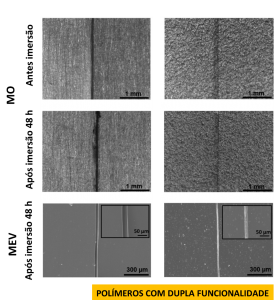
To produce the new coating, zinc microflakes (Zn) of about 13 µm were dispersed in a polymeric polyurethane matrix synthesized from vegetable oils (biological basis.) The coatings were applied in a AA7475 alloy (modern and competitive material for aerospace applications) to test the corrosion protection.
When the coating with zinc microparticles presents a defect, exposing the substrate to the corrosive environment, the dual function starts autonomously (without external intervention). The corrosion inhibiting effect of the zinc pigment combines with the self-healing effect induced by the replacement/increase of hydrogen bonds in the polyurethane polymer matrix, creating a dual function for corrosion protection.
These microscopy images represent a drastic corrosion reduction in an aluminum sheet (AA7475) coated with a Zn-modified coating (right, figure below), when compared to a reference coating. Both samples were artificially scratched and placed in sodium chloride (NaCl) at 0.005 mol/L for 48 hours. In the modified coating, the scratch recovered completely, whereas in the reference coating, the scratch remained until substrate exposure.
“The main contribution of the work is related to the dual function of the coating in a single layer, that is, the self-healing effect attributed to the replacement/increase of hydrogen bonds (polymer matrix) and surface blocking (micro zinc particles) which increases the barrier effect,” summarizes Jessica Verger Nardeli, Ph.D. from the Post-Graduate Program in Chemistry at UNESP and corresponding author with Professor Assis Vicente Benedetti (IQ-UNESP), of the article that reports the research, recently published in the journal Chemical Engineering Journal (impact factor 10.652). “In addition to the self-healing effect of the polymer matrix and the anodic protection (zinc micro-flakes), additional cathodic inhibition is also possible, especially in confined defects in the coating, due to blocking by corrosion products, predominantly those containing zinc and aluminum. Corrosion products limit oxygen access to active sites, slowing down and, ultimately, inhibiting the cathodic reaction,” concludes Nardeli.
Thus, a mechanism for cathodic inhibition in confined defects along with the self-healing effect was proposed according to the schematic representation:
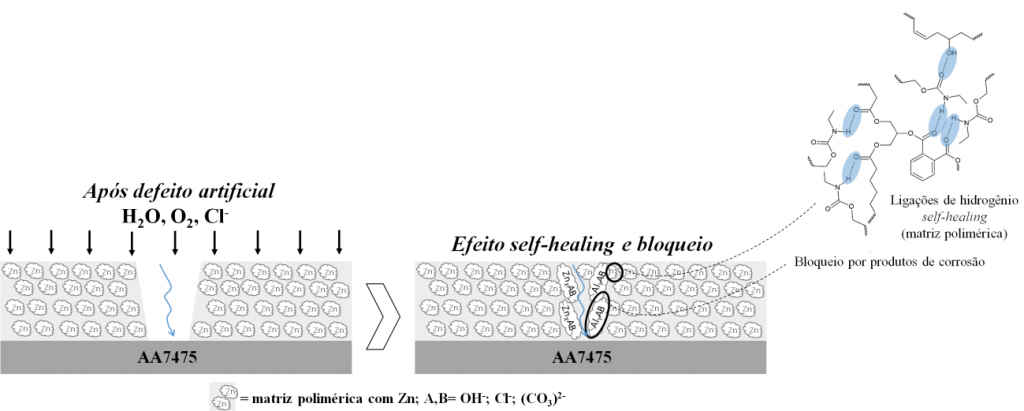
According to Professor Assis Vicente Benedetti, the initial objective of the work was to find a natural and efficient inhibitor for corrosion protection of aluminum alloys, together with an efficient polymer matrix as a barrier against electrolyte permeation. Thus, during her doctorate, Jessica Verger Nardeli performed several experiments based on a series of conventional and localized electrochemical measurements, complemented with computational calculations. “Thus, we had support to elaborate a dual function coating in a single layer,” says Dr. Nardeli.
Novelty of the study
It is well known that there is abundant literature addressing the topic of coatings for corrosion protection of aluminum alloys, but studies focusing on the corrosion protection of the AA7475 alloy, a relatively modern aluminum alloy, are still scarce. Therefore, AA7475 alloy corrosion protection coatings are an important research topic, and even better if these coatings have a dual protective action: self-curing and corrosion inhibition. The bio-based coating modified with zinc micro-flakes developed and applied in AA7475 alloy has both cited properties.
The study received funding from the Brazilian São Paulo Research Foundation (FAPESP). Jessica Verger Nardeli’s doctoral thesis was nominated for the CAPES 2021 Thesis National Award.

Paper: Biobased self-healing polyurethane coating with Zn micro-flakes for corrosion protection of AA7475. Jéssica Verger Nardeli, Cecílio Sadao Fugivara, Maryna Taryba, Fátima Montemor, Assis Vicente Benedetti, Chemical Engineering Journal, 404, 2021, 126478, https://doi.org/10.1016/j.cej.2020.126478.
Contact: Jéssica Nardeli – jeh.nardeli@gmail.com
|
|||||||||||||||||||||||
|
|||||||||||||||||||||||
|